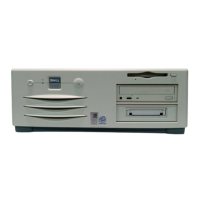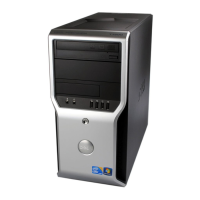Glossary 303
F
F—Fahrenheit — A temperature measurement system where 32° is the freezing
point and 212° is the boiling point of water.
FCC — Federal Communications Commission — A U.S. agency responsible for
enforcing communications-related regulations that state how much radiation
computers and other electronic equipment can emit.
F
LOPPY DRIVE — A disk drive that can read and write to floppy disks.
F
OLDER — A place to organize and group files on a disk or drive. Files in a folder
can be viewed and ordered in various ways, such as alphabetically, by date, and by
size.
F
ORMAT — The process that prepares a drive or disk for file storage. When a drive
or disk is formatted, the existing information on it is lost.
FSB — front side bus — The data path and physical interface between the
microprocessor and RAM.
FTP — file transfer protocol — A standard Internet protocol used to exchange
files between computers connected to the Internet.
G
G—gravity — A measurement of weight and force.
GB — gigabyte — For memory, a gigabyte is a unit of data that equals 1024 MB
(1,073,741,824 bytes); for storage, a gigabyte equals 16 Mb, or 1 billion bytes.
GH
Z — gigahertz — A measurement of frequency that equals one thousand
million Hz, or one thousand MHz.
G
RAPHICS MODE — A video mode that can be defined as x horizontal pixels by y
vertical pixels by z colors. Graphics modes can display an unlimited variety of shapes
and fonts.
GUI — graphical user interface — Software that interacts with the user by means
of menus, windows, and icons. Most programs that operate on the Microsoft
Windows operating systems are GUIs.
H
HARD DRIVE — A drive that reads and writes data on a hard disk. The terms hard
drive and hard disk are often used interchangeably.
H
EAT SINK — A metal plate on some microprocessors that helps dissipate heat.
H
IBERNATE MODE — A power management mode that saves everything in
memory to a reserved space on the hard drive and then turns off the computer.

